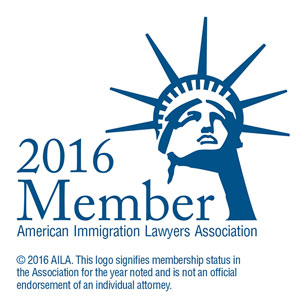Is Secretary Rubio’s Bare Bone’s Letter Deserving of Deference in Khalil’s Deportation Case?
By Cyrus D. Mehta and Kaitlyn Box*
On April 11, 2025, Immigration Judge Jamee Comans in Louisiana ruled that Mahmoud Khalil, a Columbia University graduate and pro-Palestine activist, can be deported. Judge Comans stated that “the department has met its burden to establish removability by clear and convincing evidence”, referring to Rubio’s letter. She also declined to address Khalil’s constitutional claims, stating that the immigration court “is without jurisdiction to entertain challenges to the validity of this law under the Constitution”. Khalil can now appeal his case to the Board of Immigration Appeals, and ultimately to a court of appeals.
Our previous blog addressed Khalil’s case and considered how much deference should be afforded to the Secretary of State’s determination in the post-Chevron era. The immigration enforcement against Khalil is based INA 237(a)(4)(C)(i), which provides for the deportation of a noncitizen if the Secretary of State has determined that their presence or activities would have adverse policy consequences. Pursuant to 212(a)(3)(C)(iii), the government bears the burden of proving “by clear, unequivocal, and convincing evidence that the Secretary of State has made a facially reasonable and bona fide determination that an alien’s presence or activities in the United States would have potentially serious adverse foreign policy consequences for the United States” in order to establish that a noncitizen is deportable under this provision.
A two-page memorandum from Secretary of State Marco Rubio outlining that Khalil’s presence in the U.S. would have seriously adverse consequences on U.S. foreign policy has now been made publicly available. The analysis provided in Rubio’s memorandum is thin, and stately merely that the determination is based on Khalil’s participation in “antisemitic protests and disruptive activities” and “citations for unlawful activity during these protests” which “undermine U.S. policy to combat anti-Semitism around the world and in the United States, in addition to efforts to protect Jewish students from harassment and violence in the United States”. The determination references five attached exhibits, which do not appear to have been made available to the public. It does not appear that Secretary Rubio’s determination has been provided to the chairmen of the Judiciary and Foreign Affairs Committees of the House and to the Judiciary and Foreign Relations Committee of the Senate as required by INA 212(a)(3)(C)(iv) as yet.
As discussed at length in our previous blog, the 2024 Supreme Court decision Loper Bright Enterprises v. Raimondo, which abolished Chevron deference, could provide a means of challenging the level of deference given to the Secretary’s determination. Although a 1999 Board of Immigration Appeals (BIA) case, Matter of Ruiz-Massieu, held that a determination letter from the Secretary of State “conveying the Secretary’s determination that an alien’s presence in this country would have potentially serious adverse foreign policy consequences for the United States, and stating facially reasonable and bona fide reasons for that determination” is sufficient to satisfy INA 212(a)(3)(C)(iii), this case was decided pre-Loper Bright. Secretary Rubio’s letter provided no thorough discussion of Khalil’s allegedly threatening or antisemitic activities. The letter of Secretary Christopher Warren in the Ruiz-Massieu case was far more detailed that Rubio’s bare boned letter. As such, it is hoped that a court of appeals will not give deference to the determination as proof that Khalil’s presence in the US is contrary to US foreign policy interests.
In a future case, an IJ ought not rubber stamp such a bare bones letter as it does not meet the facially reasonable and bona fide determination that the person’s presence or activities in the United States would have potentially serious adverse foreign policy. If an IJ is not courageous enough to do this, and the Board of Immigration Appeals rubber stamps the IJ, the courts of appeals would certainly have the authority under Loper Bright to cast aside deference after being presented with such a meagre letter from the Secretary of State. This is in addition to also arguing that INA 237(a)(4)(C)(i) violates a person’s First Amendment rights, is void for vagueness and represents an impermissible delegation of legislative power to the executive
*Kaitlyn Box is a Partner at Cyrus D. Mehta & Partners PLLC.




